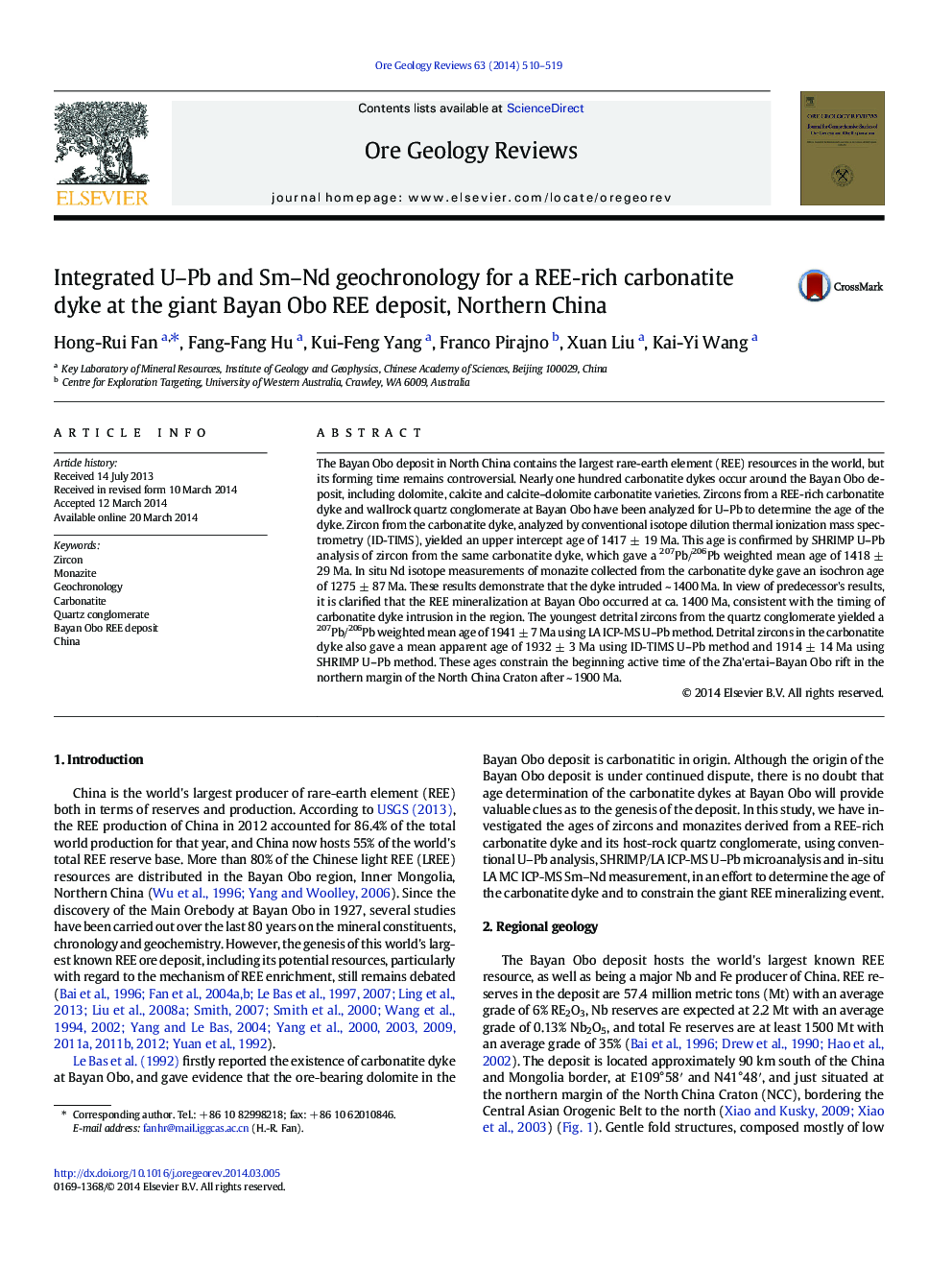| Article ID | Journal | Published Year | Pages | File Type |
|---|---|---|---|---|
| 4697226 | Ore Geology Reviews | 2014 | 10 Pages |
•Age of the REE-rich carbonatite dyke is ~ 1400 Ma.•Different dating methods on zircon and monazite get concerted ages.•Detrital zircon ages constrain forming of the Bayan Obo rift after ~ 1900 Ma.
The Bayan Obo deposit in North China contains the largest rare-earth element (REE) resources in the world, but its forming time remains controversial. Nearly one hundred carbonatite dykes occur around the Bayan Obo deposit, including dolomite, calcite and calcite–dolomite carbonatite varieties. Zircons from a REE-rich carbonatite dyke and wallrock quartz conglomerate at Bayan Obo have been analyzed for U–Pb to determine the age of the dyke. Zircon from the carbonatite dyke, analyzed by conventional isotope dilution thermal ionization mass spectrometry (ID-TIMS), yielded an upper intercept age of 1417 ± 19 Ma. This age is confirmed by SHRIMP U–Pb analysis of zircon from the same carbonatite dyke, which gave a 207Pb/206Pb weighted mean age of 1418 ± 29 Ma. In situ Nd isotope measurements of monazite collected from the carbonatite dyke gave an isochron age of 1275 ± 87 Ma. These results demonstrate that the dyke intruded ~ 1400 Ma. In view of predecessor's results, it is clarified that the REE mineralization at Bayan Obo occurred at ca. 1400 Ma, consistent with the timing of carbonatite dyke intrusion in the region. The youngest detrital zircons from the quartz conglomerate yielded a 207Pb/206Pb weighted mean age of 1941 ± 7 Ma using LA ICP-MS U–Pb method. Detrital zircons in the carbonatite dyke also gave a mean apparent age of 1932 ± 3 Ma using ID-TIMS U–Pb method and 1914 ± 14 Ma using SHRIMP U–Pb method. These ages constrain the beginning active time of the Zha'ertai–Bayan Obo rift in the northern margin of the North China Craton after ~ 1900 Ma.
